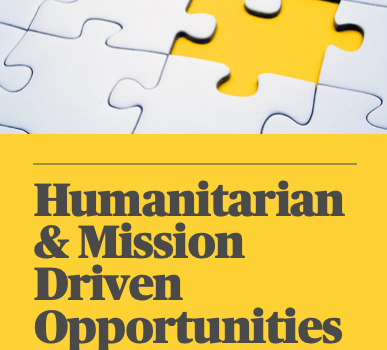The humanitarian development sector offers a fantastic opportunity to be a part of real and lasting change. This is even though, according to the U.K.’s national careers service website there are no online or classroom courses featuring the keyword “humanitarian”! This seems rather remarkable given that “The State of the Humanitarian System (SOHS) report” (2022) found that, in real terms, international humanitarian assistance has nearly doubled over the past decade. It’s also odd as the Humanitarian Leadership Academy was set up in March 2015 by a global consortium of aid organisations with initial £20m funding of £20m from the UK Department for International Development, out of a target of £50m! Today the Academy has registered 670,000 learners and 2.2 million course enrolments across the sector and beyond.
How big is the sector?
Reaching an estimated $31.3 billion in 2021, humanitarian funding is now larger than ever before. 80% of international humanitarian funding now comes from public funds and the bulk of humanitarian aid continues to flow – in the first instance – through UN agencies. On average, between 2012 and 2021, 56% of public humanitarian assistance went to UN organisations, compared to 18% via non governmental organisations (NGOs) and 9% through the Red Cross and Red Crescent Movement. Whilst there are some annual fluctuations, this funding model appears to be firmly established in the humanitarian sector.
In 2020 it was estimated that more than 630,000 humanitarian staff were working in countries with humanitarian crises. Over 90% of these staff were nationals of the countries they were working in.
How many employers across the globe?
The SOHS 2022 report estimated that there are 5,000 organisations in the humanitarian system – roughly 10% higher than estimates a decade ago. The top five international non governmental organisations (INGOs) remained the largest in the humanitarian INGO landscape. Indeed, Médecins Sans Frontières (MSF), the International Rescue Committee (IRC), the Norwegian Refugee Council (NRC), Save the Children International and World Vision International (WVI) accounted for just over a quarter of total NGO expenditure in 2020, a share which grew by 4% since the previous SOHS report. Notably, two INGOs (MSF and WVI) do not feature as the largest recipients of institutional humanitarian aid, given that their income largely comes from private individuals.
What about equality of opportunity?
Overall, the humanitarian sector appears to be gradually improving the representation of women in senior positions. In a sample of UN agencies and INGOs that provided information for the SOHS 2022 report, 49% of the highest-paid jobs in UN agencies were held by women, and 61% in INGOs. There is also some evidence to suggest that the boards of major INGOs are moving towards parity in gender representation.
However, while agencies employ a large number of national staff, it appears that only a minority make it to country director level, let alone to HQ leadership positions. Among the small sample of UN agencies and INGOs that responded to Humanitarian Outcomes’ questionnaire for the 2022 edition of the SOHS, an average of less than 20% of country director posts were occupied by national staff.
Opportunities within the sector for people based in the UK
Although many NGOs are recruiting more from the locations they work in across the globe, there are still lots of openings within the UK’s international development and humanitarian sector.
If you are thinking of changing your career to move into international development BOND publishes some excellent advice.
Making the change
If you are planning to make a significant change of career direction: one that will take you into a socially impactful role or a role in humanitarian development or aid, you will not be alone!
In my role as a career coach, I find that this desire for impact, for career significance, to crystallise and implement a life mission becomes a central focus for many people in early, mid or late careers for all kinds of reasons. Mission driven, impactful roles in the humanitarian sector are not easy to find but my new book identifies where the vacancies are advertised, reviews the various online job boards and recommends where to look depending on your background experience.
A second invaluable section provides a guide to the excellent preparatory (and largely free) education that is now available online for those in – or aiming to join – the sector. Despite what the UK national careers service might suggest, there is, in fact, a wide variety of education open to those seeking to pivot into this rewarding and expanding sector.
Who am I?
Formerly Global Practice Leader for Talent Management at World Vision International, I pioneered the charities’ global leader orientation, talent and succession management and education processes, leadership assessment, coaching and career development services during a period of continuous change.
I pivoted into the sector from education and finance having previously been the Global Consulting Development Leader for Hewitt Associates (now Aon).
I have significant coaching and consulting experience gained as a Fellow in Leadership and Organisational Development with the Office for Public Management, in my role as principal coach at Vitas Consult Ltd, with Waverley Learning and also as an Impactpool career coach.
